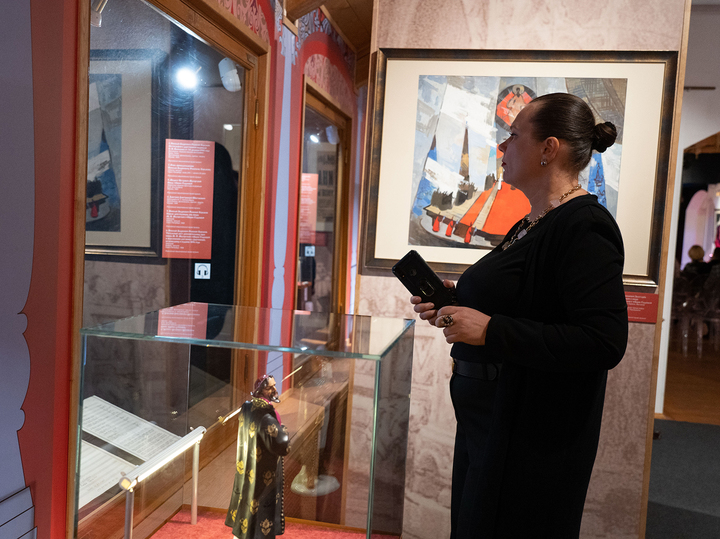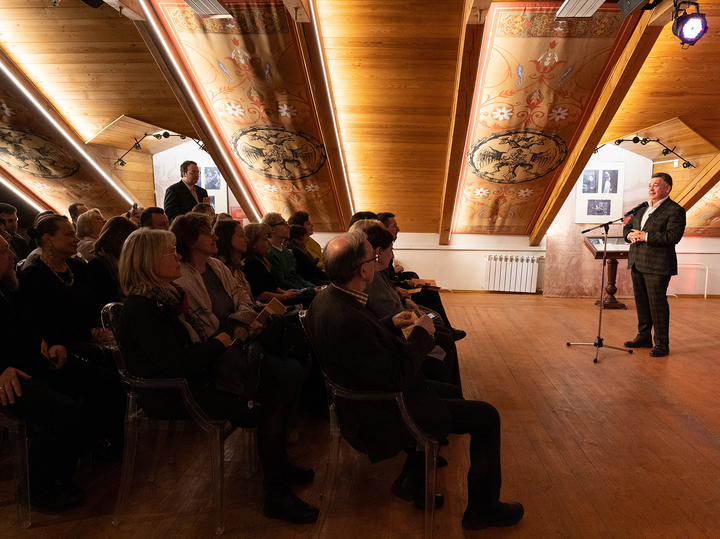The Tchaikovsky Museum talked about the thorny path of the opera “Boris Godunov”
[ad_1]
An exhibition dedicated to the 185th anniversary of the birth of composer Modest Petrovich Mussorgsky has opened in Moscow. There, viewers will be able to get acquainted with the works of outstanding artists, musicians, scientists and directors, and learn more about the difficult path that the opera “Boris Godunov” went through.
Any self-respecting theater must have “Boris Godunov” in its repertoire. The opera has been triumphantly performed on stages for more than a century, but few people know how bitter and difficult its path to the stage was. The exhibition talks about this and more. But let’s start with history: several figures played key roles in the opera’s triumphant march. It all started with Alexander Pushkin, who needed to gain courage and make the main character not just a tsar, but a disgraced tsar.
It is interesting that Modest Mussorgsky in the second half of the 19th century was inspired by the ancient tragedy “Oedipus the King” by Sophocles. It is impossible not to mention that the composer composed a work of extraordinary power for only a year, but the theater committee was against the production. Therefore, reluctantly, Mussorgsky created a new edition, in which he turned to Nikolsky’s historical work.
However, the opera’s path did not end there. The third key figure in its birth was Rimsky-Korsakov, who worked on the opera for 30 years, making adjustments to create a more luxurious orchestration. Despite the fact that he himself was a composer, he devoted his life to improving someone else’s work.
Having gone through a thorny path from the creative interference of other musicians to the rejection and misunderstanding of his contemporaries, in the 20th century the work finally received recognition, entering the repertoire of opera houses not only in Russia, but throughout the world.

The exhibition consists of three sections: “The history of the creation and first production of the opera”, “Alternative views on the masterpiece” and “Mussorgsky’s opera in stage incarnations in the 20th–21st centuries”. It will not only open the veil of secrecy over the creation of the work, but will introduce you to history through exhibits.
Everything happens in the house where Tchaikovsky lived and worked. The atmosphere is so well conveyed that it seems that the composer was gone for only a few minutes, leaving the audience alone with the exhibits. And although many of the originals could not be placed due to space restrictions, all the best appeared before the guests thanks to serious selection.
As Mikhail Bryzgalov, Honored Artist of the Russian Federation, shared with an MK correspondent, each exhibit deserves attention: “It’s hard to say what’s most important here. Of course, the manuscripts of Modest Mussorgsky and the costumes of Chaliapin. The opera singer appeared before the public in different guises. For example, we have two costumes for Boris Godunov and one for Varlaam (the peasant), in which Fyodor Ivanovich also shone in this role. And what is Korovin’s sketch worth? It seems to me that if there was an exhibition of one painting, I would go to look at his hand.”
Also worthy of special attention are the paintings and graphic sketches of Kuzma Petrov-Vodkin, Mstislav Dobuzhinsky, manuscripts of Modest Mussorgsky and his friend, colleague in the “Mighty Handful” circle, ancient music and book editions, and archival documents. And, of course, evidence of that time is the posters previously presented in various theaters. They tacitly confirm that the opera “Boris Godunov” is one of the most performed in the world, not only today. For many years she has not left the stage.

“We must not forget that last year, despite the difficult situation, La Scala’s season opened with Boris Godunov. And this says a lot,” said Mikhail Bryzgalov.
Of particular interest is the score by Nikolai Golovanov. After the resumption of the performance at the Bolshoi Theater, conductors come to the museum and ask for a musical composition to see how the maestro worked. Interestingly, the composer always used colored pencils, leaving his own notes.
Also, one of the relics was a ring with a red stone displayed in a display case, which Chaliapin wore when he went on stage in the role of Tsar Boris. As the RNMM press service shared, the decoration was donated to the Museum by Ivan Petrov, who also performed the title role in Mussorgsky’s opera. During a tour in 1964, Petrov received a relic from Chaliapin’s daughter.
It is worth noting that the introduction of new technologies and an audio guide added a touch of modernity, diluting the atmosphere of past centuries. Guests will be able to see photographs of opera productions at the Moscow theater and read a letter from Pavel Fedorov to Modest Mussorgsky. In addition, the throne, on which everyone can take a photo, adds a recreational touch. Thanks to this approach, the museum will be interesting not only for adults, but also for children.
Visitors noted that in addition to the pleasant woody notes, a sweetish hint of incense was noticeable in the room. As the organizers explained, such a soft trail of odors can come from costumes that have been lying in chests for a long time, waiting in the wings. Thanks to this, today you can once again feel the fragrance of the powder compact and perfume that the outstanding artist Fyodor Chaliapin loved so much.

“It seems to me that the Museum of Music managed to transform the attic of the mansion into a wonderful exhibition hall. And the acoustics there are more intimate. The partially wooden ceiling adds some authenticity to the place. We listened to a wonderful concert and took part in an excursion. In general, the human atmosphere is somehow special. I will have the most pleasant memories from this evening,” said a museum guest, artist Saint Beyon, emotionally.
The General Director of the Russian National Museum of Music shared that in the future I would like to see a costume from the Bolshoi Theater by Ildar Abdrazakov in my collection. “His costume may appear among us as a symbol of a modern interpretation of the opera, which is already over 150 years old,” he said.
The exhibition will run until June 30, 2024.
[ad_2]
Source link






